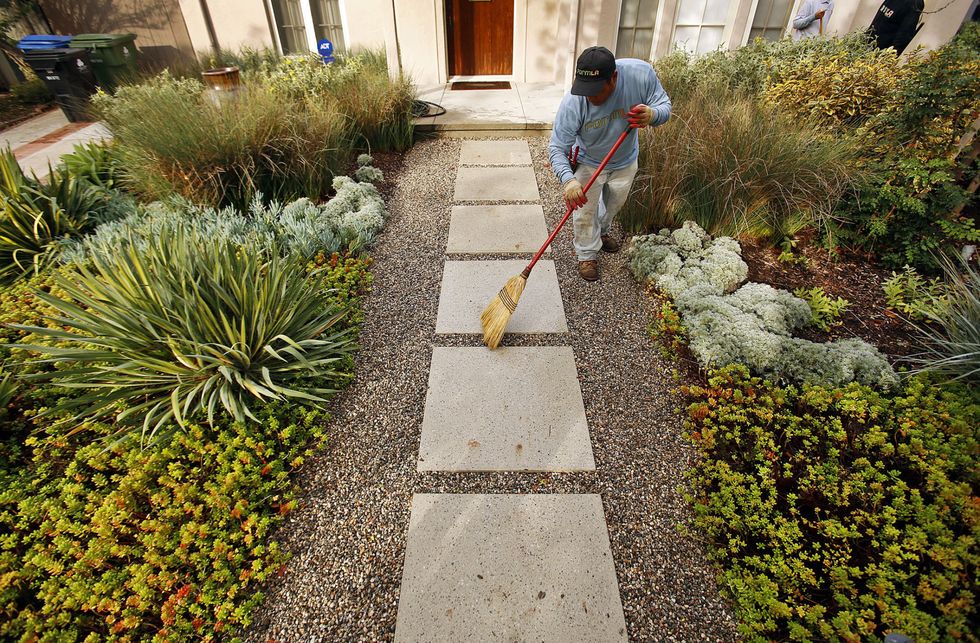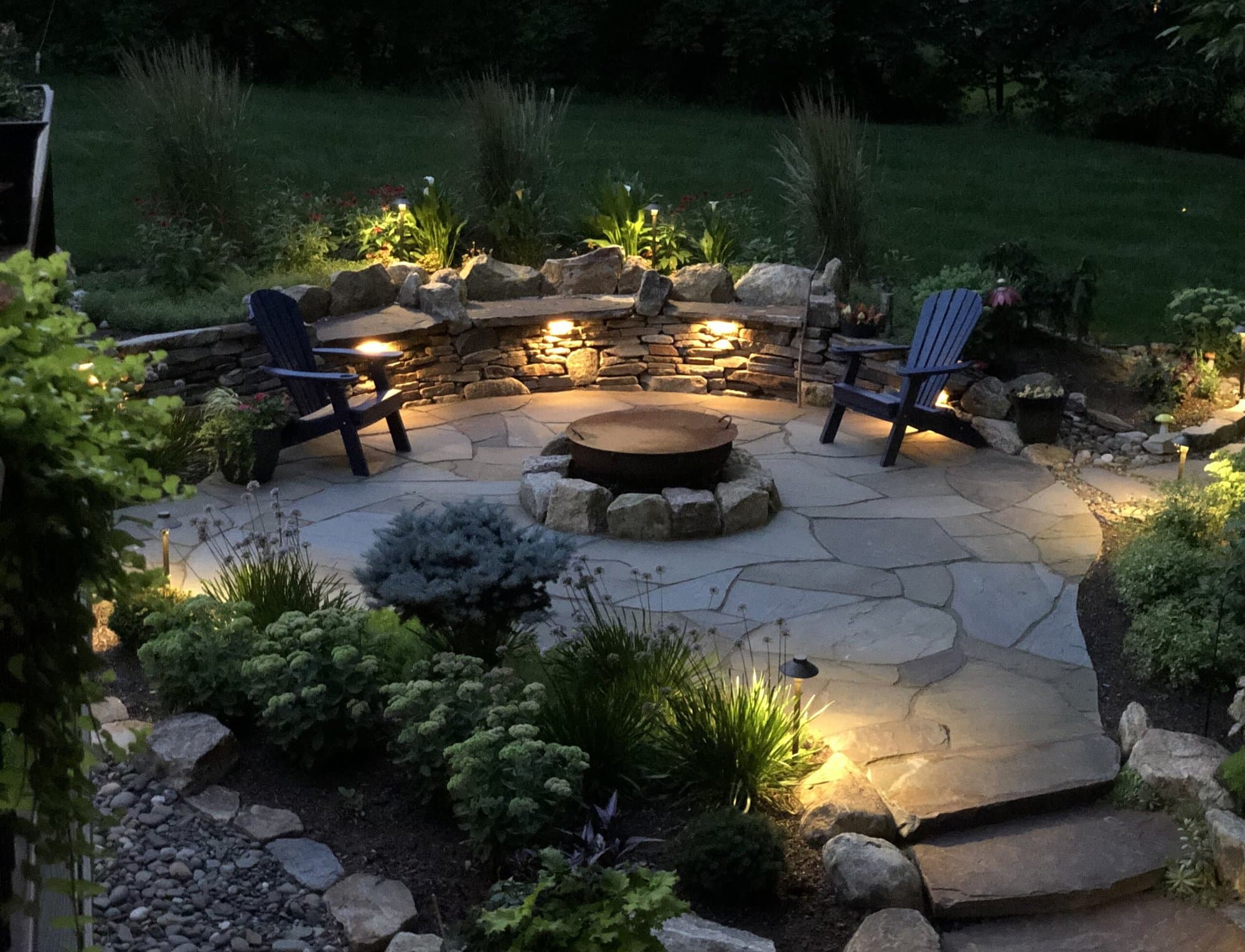Explore Creative Solutions with Professional Palm Desert Landscaping
Explore Creative Solutions with Professional Palm Desert Landscaping
Blog Article
A Comprehensive Overview to Creating and Implementing Effective Landscape Design Solutions
The art and scientific research of landscaping prolong beyond plain aesthetics; they involve a thoughtful assimilation of layout concepts, ecological stewardship, and practical execution. A comprehensive overview to effective landscaping options begins with an extensive understanding of your exterior room, stressing the significance of unity, percentage, and balance. As we discover sustainable methods and the choice of proper plants, the effects for biodiversity and area well-being become increasingly noticeable. What techniques can one employ to guarantee these landscapes not just flourish however likewise grow attuned to their surroundings?

Recognizing Landscape Layout Principles
One could wonder what fundamental elements contribute to efficient landscape design. At its core, successful landscape design pivots on numerous key concepts that lead the plan and choice of elements within a space. These principles include unity, rhythm, proportion, and balance, each offering to produce an unified outside environment.
Unity describes the natural partnership among various parts, ensuring that they work with each other cosmetically and functionally. Equilibrium can be achieved with asymmetrical or balanced setups, enabling the landscape to feel stable and inviting. Proportion entails comprehending the scale of components in connection with each various other and the surrounding atmosphere, advertising visual consistency and convenience.

Assessing Your Outdoor Room
Prior to carrying out the concepts of landscape design, a comprehensive assessment of your outdoor room is crucial. This preliminary assessment assists define the range of your landscaping task and guarantees that your style straightens with the distinct characteristics of your residential property. Begin by examining the dimensions of your space, taking precise measurements to recognize the offered area for various elements such as patio areas, yards, and paths.
Next, observe the existing features of your landscape, consisting of topography, dirt quality, and water drainage patterns. These variables dramatically influence plant choice and placement. Furthermore, evaluate the sunshine exposure throughout different locations throughout the day, as this will influence the kinds of plants that grow in your yard.
Take into consideration the microclimates produced by frameworks, trees, and other obstacles, as they can impact temperature level and moisture degrees. Lastly, keep in mind of any kind of existing plants or hardscape components that you wish to keep or get rid of. This detailed assessment prepares for a effective and well-informed landscaping service, making sure that your layout is not only cosmetically pleasing but lasting and also functional for several years to come.
Sustainable Landscaping Strategies
Incorporating sustainable landscape design strategies is necessary for creating an eco liable outside space. These practices not only promote environmental balance yet additionally improve the check here visual and functional value of a landscape. One fundamental method is the use of native plants, which require much less water and upkeep while supporting neighborhood wildlife. Carrying out efficient irrigation systems, such as drip watering, decreases water waste and ensures that plants obtain ample wetness.

An additional effective method is the critical positioning of trees and bushes to supply all-natural windbreaks and shade, hence reducing power prices (Palm Desert Landscaping). Rain yards can be integrated right into the landscape design to handle stormwater runoff effectively, filtering system contaminants before they enter rivers
Selecting the Right Plant Kingdoms
Selecting the right plants for your landscape is vital to attaining both visual allure and eco-friendly harmony. The procedure starts with an understanding of your local environment, soil conditions, and the specific microenvironments within your landscape. Analyzing elements such as sunlight direct exposure, moisture levels, and existing plants will certainly help you pick plants that flourish in your special setting.
Consider incorporating indigenous plants, as they are well-adapted to regional conditions, need much less upkeep, and support local wildlife. Additionally, picking a diverse array of species can enhance biodiversity while lowering the danger of disease and bug break outs. It is important to examine the development practices, flowering periods, and seasonal colors of potential plants to create a natural and dynamic landscape.
In addition, think of the planned usage of the area; for instance, if the area will certainly experience high foot traffic, choose resistant ground covers. By thoughtfully picking plants that line up with both your visual goals and environmental demands, you can produce a lasting landscape that not just enhances your residential or commercial property however additionally adds favorably to the bordering environment.

Execution and Upkeep Approaches
As soon as the ideal plants have actually been selected for your landscape, the focus shifts to efficient application and ongoing maintenance methods. Effective setup starts with proper Web Site site prep work, that includes dirt testing to determine nutrient levels and pH, followed by modifying the soil as required. Thoroughly prepare plants according to their growth routines and light demands, making sure adequate spacing to promote healthy development.
Watering is an important element of implementation. Establish a watering timetable that thinks about the specific demands of each plant varieties, adjusting for seasonal adjustments. Using drip watering systems can enhance water efficiency and reduce overflow.
Upkeep strategies have to be implemented to guarantee the durability and vigor of your landscape. Regular jobs include weeding, mulching, and pruning to manage development and avoid disease. Fertilization needs to be carried out based upon dirt tests, giving the required nutrients without over-fertilizing.
Keeping an eye on for insects and conditions is important; early discovery can stop substantial damages. Lastly, seasonal modifications to More Info upkeep routines, such as preparing and winterizing perennials for spring growth, will certainly make sure that your landscape remains aesthetically appealing and healthy and balanced year-round.
Final Thought
Effective application and ongoing upkeep better guarantee the long life and vitality of landscapes. By integrating these elements, landscapes can be changed into stunning, functional settings that promote biodiversity and contribute favorably to neighborhood wellness.
One might wonder what fundamental aspects contribute to reliable landscape style. At its core, successful landscape style hinges on numerous key concepts that lead the arrangement and choice of aspects within a room.Selecting the right plants for your landscape is crucial to achieving both visual charm and environmental consistency. It is vital to evaluate the growth behaviors, blooming periods, and seasonal colors of prospective plants to produce a vibrant and cohesive landscape.
Once the best plants have actually been chosen for your landscape, the focus changes to effective implementation and continuous maintenance techniques.
Report this page